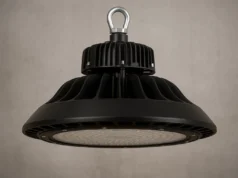Consider the last time a hospital issued a Healthcare RFP. It was likely, not pretty. Piles of paper, innumerable vendor questions, committee discussions that lasted weeks, and the panic feeling that—no matter how hard you try—you may still miss the best opportunity. If you’ve ever been in that room, you understand it’s more than just paper. It’s about stress. Every choice has a direct effect on patients, employees, and the bottom line.
Now, picture removing that disorder. Picture if the time spent sorting vendor proposals, matching pricing sheets by hand, and verifying compliance three times could be reduced with technology that thinks along with you. That’s where AI and automation come in, not as buzzwords, but as functioning solutions that can refresh a process that most people abhor.
Why the RFP Process Feels Broken
Let’s call it like it is: the old RFP process in hospitals is awkward.
Procurement staff work with dozens of bids, each with different layouts. Vendors send PDFs, Excel spreadsheets, and sometimes even faxed-over-looking documents scanned from the 90s. Decision-makers are buried in information but parched for insight. New requirements may have already been changed in all comparisons done, and the result is stale.
And then there is the human factor. Frustration among staff. Physicians ask why the equipment is late. Finance is concerned with overspending. Vendors are upset about poor communication. Everyone can sense the inefficiency.
So the question is really—how long will hospitals be able to continue issuing RFPs in such a manner?
The Promise of AI in a Process That Craves Clarity
AI is not coming to supplant the human judgment that hospitals rely on. It’s coming to do the heavy lifting—the mundane, soul-sucking work that consumes time and energy.
Consider document intake. Rather than interns or coordinators poring over pages line by line, AI can read and classify submissions on the fly, indicate missing data, and format and standardize. Price tables that took hours to enter manually? AI can normalize them in minutes, cleaning messy spreadsheets into tidy, comparable data sets.
But that is not all. It can identify red flags humans may overlook, such as discrepancies between a vendor’s commitments and past performance records. It can bring out faint risks hidden in contract language. It can even provide weighted scoring models to ensure that personal preferences do not bias the evaluation process.
The result? Procurement teams go into evaluation sessions with clarity, not chaos.
Automation: The Quiet Hero Behind the Scenes
While the “thinking” is being done by AI, automation takes care of the “doing.” Imagine the constant rounds of back-and-forth emails between hospital staff and vendors—clarification questions, deadline reminders, requests for missing documents. Automation can do all of that for you. Vendors are automatically updated, deadlines are monitored automatically, and staff don’t spend hours tracking down responses.
Workflows that once took weeks can be compressed into days. Proposals enter a centralized system, reminders keep everyone on the same page, and tasks progress without prodding.
It is not exactly glamorous, but if you’ve endured the tedium of manual RFPs, you know how revolutionary this change feels.
Beyond Speed: The Real Value
Here’s the thing—time isn’t the only solution to the RFP problem. While AI and automation save time, the true change comes in quality.
Hospitals don’t need the lowest-cost vendor. They need the right partner. A vendor who meets deadlines, adheres to strict compliance requirements, and shares long-term objectives like sustainability or patient care enhancement.
AI can scan historical vendor performance across multiple hospitals, monitor delivery reliability, and even review peer-reviewed sentiment. Decisions are no longer based on intuition but on evidence. Procurement is no longer only faster but smarter, more equitable, and better aligned with what hospitals truly require.
A Human + Machine Partnership
Now, let’s dispel a myth. Nobody’s proposing AI determines which surgical robot to buy for a hospital. Those decisions involve too much subtlety, context, and human discretion.
What AI and automation do is make room. By removing grunt work, clinicians, finance teams, and administrators can concentrate on what counts: aligning decisions with patient care, budget constraints, and strategic goals.
It’s a collaboration—machines sort and analyze, humans think and decide. And that balance makes the process not only efficient but also reliable.
Conquering the Fear Factor
Sure, not everyone is greeting this change with open arms. Some fear overdependence on algorithms. Some fear the loss of jobs. And let’s be honest, hospitals aren’t exactly best known for embracing new technology at lightning speed.
So how do you get beyond the fear? By being open. They can challenge and fine-tune by demonstrating to staff how AI operates, not as a black box, but as a tool. By beginning small—perhaps automating document receipt for one RFP—and establishing confidence through hard-won victories.
Resistance evaporates when individuals understand that AI is not meant to replace them but assist them.
Why Hospitals Can’t Afford to Wait
Hospitals are under immense pressure—shrinking margins, rising costs, staff shortages, and increasing regulatory demands. Every inefficiency compounds these challenges.
The RFP process, not often glamorous, is a powerful lever. Do it well; hospitals save millions, release staff capacity, and enhance vendor relations. Screw it up, and waste enters, projects grind to a halt, and patients end up suffering.
Reinventing the RFP with AI and automation isn’t a “nice to have,” therefore. It’s a survival plan.
Closing the Loop: The Human Impact
Ultimately, this is not about procurement organizations or vendor lists. It’s about human beings. Its about nurses receiving timely supplies because contracts were written effectively. It’s about patients who see benefits from the equipment that was picked with data-driven accuracy. Its about employees who are less exhausted because they no longer waste hours on manual comparisons and ceaseless email threads.
AI and automation won’t solve diseases. But Valify will solve inefficiency. And in a hospital, that’s no small thing.
So the next time someone groans at the prospect of yet another RFP, remind them: it doesn’t have to be this way. The process can go faster, wiser, and nearly painless. All it will take is thinking differently about how it’s always been done.








